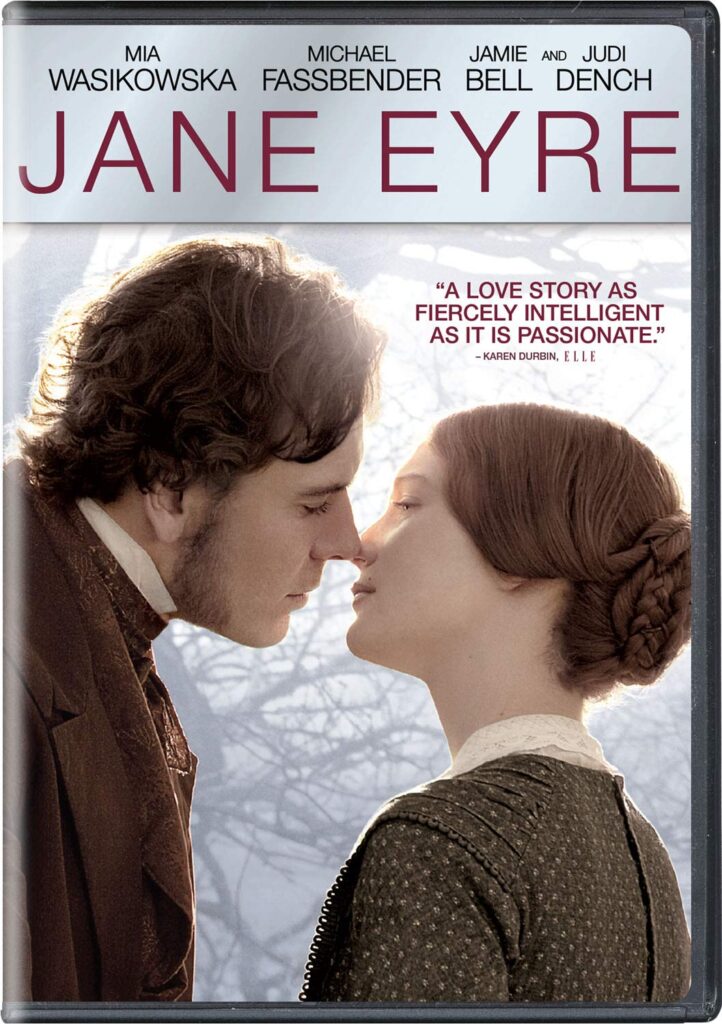
Charlotte Bronte’s classic 1847 Gothic novel Jane Eyre has been filmed many times for movies and television over the years, but director Cary Fukunaga has now set the bar so high with his marvelous adaptation, future filmmakers will likely pause before using the source material again because of the excellent achievements of the cast and crew.
The story centers on Jane Elliot (Mia Wasikowska), an unusually strong-willed woman for the times, a trait that will define her. As the film opens, she is 10 years old (played by Amelia Clarkson) and living with her dead uncle’s family because her parents have previously died as well. Aunt Sarah (Sally Hawkins) mistreats her and eventually sends her off to a boarding school where they try to beat the defiance out of her. After school, she takes a job from Mrs. Fairfax (Dame Judy Dench) as a governess to young Adele (Romy Settbon Moore) at Thornfield Hall and eventually makes the acquaintance of Edward Fairfax Rochester (Michael Fassbender), the man of the house. Jane intrigues Rochester because she behaves and thinks differently than other women. While a bond forms between them, strange, inexplicable goings-on occur at Thornfield Hall that will have an impact on their relationship.
Cary Fukunaga wisely surrounded himself with talented people and guided them to creating a very memorable film. Moira Buffini’s screenplay packs a lot of story into two hours. It is well paced and never feels rushed. Bronte’s plot is captivating at every turn, and every character’s motivation is believable. It is also refreshing to see such a well-rounded, realistic female character in Jane. The cast delivers great performances bringing these characters to life. Wasikowska is brilliant, reserved when need be but frequently stands up for herself in a world that wasn’t used to, and was barely ready for, that behavior. Fassbender effortlessly exudes Rochester’s full range emotions as he buries himself in the character. Dench adds an authenticity to the setting just by her presence and the dialogue flows naturally from her. The production design team earns high marks for the great job they have done in creating this period. Dario Marianelli’s score also deserves mention as the exquisite melodies, led by violin, made me want to revisit them.
The most impressive work is Adriano Goldman’s cinematography, which is magnificent to behold and comes across purposeful. Appearing to be lit solely with natural light, reminiscent of Stanley Kubrick’s Barry Lyndon, Goldman embraces the darkness like few directors of photography since the glory days of film noir, adding tension to the scenes in Thornfield Hall. The boarding school color scheme is a dismal gray with the color drained out, a visual metaphor for what they are attempting to do to the children’s vitality. Yet, when things are at their happiest for Jane, bright sunlight and hues augment the warmth felt within her.
Rare is the film that excels in so many facets, so I am compelled to enthusiastically recommend Jane Eyre. If it doesn’t make year-end lists, someone hasn’t been paying attention.